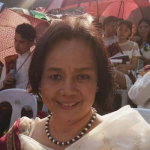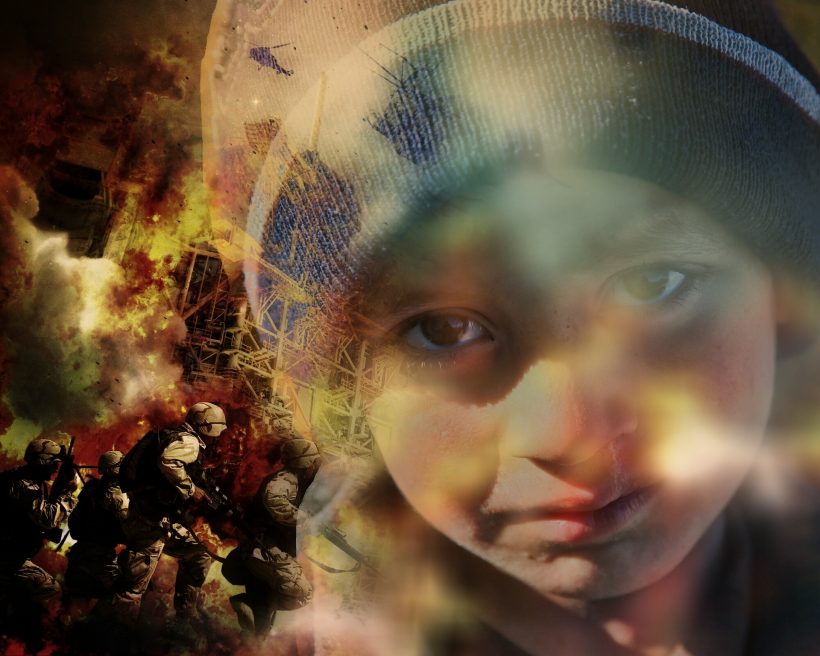May the new year 2023, the 75th anniversary of the UDHR, bring more desaparecidos back to the bosom of their family and the greater society.
by Mary Aileen D. Bacalso
The 10th of December was the 74th anniversary of the Universal Declaration of Human Rights (UDHR)– one of the most meaningful human rights documents the international community has ever produced. December, being the human rights month, is witnessing several activities intended to promote and protect human rights. The United Nations opened year-long series of events that will commemorate next year’s 75th anniversary of the UDHR.
Especially significant for me as I started a semester being a senior lecturer on Special Topics in Philippine Foreign Relations at the University of the Philippines (UP) were my classes with graduate students who have taken human rights for the first time but are, of course, being confronted with the burning human rights issues of the day. UP is known to have produced activists and rights defenders, some of whom were sadly victimized by extrajudicial killings, enforced disappearances and many other forms of human rights violations.
In the class on Human Rights and Philippine Interests, we discussed the history of human rights, the United Nations (UN); the Philippines’ role and standing during the UN’s infancy years and in the drafting of its Charter; transitional justice and its applicability in the Philippines; the core human rights treaties; the dynamics of states in drafting a treaty, the UN Human Rights Council, the major human rights issues of the country in parallel with ASEAN countries and, the challenges and best practices of victims and survivors’ struggle for truth and justice.
Toward the end of the semester, we ventured into the role and power of victims and survivors of enforced disappearances. In international parlance, victims are not only the direct victims of a particular form of human rights violation but also those who suffer harm because of the violations committed.
The most enriching experience in my human rights work is my integration, better still, immersion with victims of human rights violations. They are the ones who provide names and faces to cold statistics. They are the ones who give meaning to an advocacy which, due to the states’ lack of political will to fulfill their obligations, is not so gratifying. They remind human rights defenders of their reason for existence when the going gets rough. They provide the much-needed strength in this uphill struggle for the promotion, protection, and defense of human rights. Their presence is a reminder of the imperative to continue treading the long and arduous road of human rights advocacy.
The last two classes we had prior to the final examinations at the beginning of 2023 were graced by victims who struggled to transcend from their state of victimhood to human rights defenders.
One of these victims was Suyapa Serrano-Cruz, who shared a video message about the disappearance of her little sisters, Ernestina (three) and Erlinda Serrano-Cruz (seven). Serrano-Cruz vs. El Salvador is a case law that involves the disappearance of Ernestina and Erlinda against the landscape of the civil war in El Salvador that killed 75,000 people and disappeared 8,000. In June 1982, in the municipality of San Antonio de la Cruz in Chalatenango, in a “Cleaning Operation” conducted by 14,000 soldiers, the children were captured, abducted and made to disappear by members of the Atlacat’l division of the Salvadorean army.
The Serrano-Cruz family abandoned their house, which was then surrounded by soldiers. The mother, two daughters, and a son left the area. Other family members were separated. Deprived of food and water, the little sisters, Erlinda and Ernestina, and two of their siblings were with the father who, for days, walked in the woods and hid in a small building. Left for a while by their father who got some water for the children, the two sisters cried and were found by the soldiers. Suyapa, the elder sister of the two girls, hiding close to the scene, heard that one soldier asked whether to kill the children or to take them away. To take them away was the order, Suyapa testified. She and another witness saw the two sisters entering a military helicopter, which afterward, headed off towards the nearby village of Chalatenango and were handed over to the Red Cross.
In March 1993, the UN Truth Commission, which started its work in June 1992, published its report. Shortly after, the children’s mother, Ma. Victoria Cruz-Franco filed a complaint with the judicial authorities on the disappearance of her daughters and asked for clarification and establishment of the children’s fate and whereabouts. Victoria filed a complaint because the UN Truth Commission report made no mention of the case of her disappeared children. A Salvadorean court dismissed the case in March 1998. Because of the inutility of El Salvador’s judicial system, the case was later filed before the Inter-American Court of Human Rights.
In a judgment dated March 1, 2005, the Inter-American Court of Human Rights ruled that El Salvador violated the American Convention on Human Rights (Serrano-Cruz Sisters vs. El Salvador, 2005). “Therefore, THE COURT DECLARES: By SIX VOTES TO ONE, THAT: “1. The State has violated the right to judicial guarantees and judicial protection embodied in Articles 8(1) and 25 of the American Convention on Human Rights, in relation to Article 1 (1) thereof, to the detriment of Ernestina and Erlinda Serrano Cruz and their next of kin, in the terms of paragraphs 53 to 107 of its judgment…” (Serrano-Cruz Sisters v. El Salvador, 2005, p. 98-99).
The Court recommended that El Salvador ask for forgiveness from the Serrano-Cruz family; conduct a thorough investigation on the whereabouts of the two sisters; publish the criminal proceedings; create a national commission to search for the disappeared children, create a web page for the exchange of data about the disappeared children; create a national genetic base to identify disappeared children; hold a public ceremony admitting responsibility for the declared human rights violations; declare a national day of disappeared children, provide psychological treatment to the relatives of the disappeared children, and cover moral and material damages.
Except for the conduct of a thorough investigation of the whereabouts of the sisters and surfacing them alive as expected by the family and the publication of the criminal proceedings, most of the recommendations have been implemented.
This is a story of best practice. However, nothing could fully satisfy Suyapa more than the return of her sisters. What hurt her most was when a state witness testified that her sisters did not even exist.
To culminate the semester, my class also studied about the stolen children in another Central American country of Guatemala and in Timor-Leste during the Indonesian occupation. Not just once did the students shed tears. One commented that the phenomenon of stolen children was what affected him most.
Humanly gratifying in the long and arduous process of searching for truth and justice is the reunification of these children with their biological families, thanks to the courage and persistence of all the actors that made the search and reunification possible. The joy of finally knowing the children’s identities stolen from them by the perpetrators and the process of reconstructing the historical memory keep the organizations that accompany victims going.
Before the end of 2022, the Liga Guatemalteca de Higiene Mental has found 529 disappeared children and facilitated their reunification with their biological families. In 2022, the Asia Justice and Rights (AJAR) facilitated 16 family reunions of Timorese children forcibly taken from Timor-Leste to Indonesia during the Indonesian occupation.
Every reunion was a moment of joy both for the child and the concerned family and for those who worked hard to make it possible. When a staff member of the Indonesian rights organization KontraS, Victor da Costa, one of the stolen children from Timor-Leste, learned about his identity, he had an ambivalent feeling after knowing that his family, thinking that he was dead, made a mock grave for him and performed a prayer-ritual for his soul to be sent to heaven. Upon his return, his family joyfully performed a new ritual for the return of his soul.
The work of concerned organizations such as the AJAR and the Liga Guatemalteca de Higiene Mental is highly commendable. In the process, they need support from their respective governments and from other civil society organizations. On the contrary, however, in Guatemala, amidst wide impunity and dwindling resources, the Liga Guatemalteca de Higiene Mental receives threats and harassments.
The courage and persistence of all actors in this real drama of stolen children, the advancement in science through the use of DNA, the victims’ insistence in knowing the truth and the profound love that transcends all impediments to truth – all these have made the search and reunions possible.
On 7 December, to commemorate the anniversary of the Universal Declaration of Human Rights, the Pamantasan ng Lungsod ng Maynila University organized a forum on gender and human rights. I gave a one-hour lecture on human rights to 270 students and faculty members. With me was Mrs. Edita Burgos, mother of desaparecido, Jonas Burgos who was one of the hundreds of desaparecidos that were made to disappear during the Gloria Macapagal Arroyo administration. She has never found her beloved Jonas.
A week later, on the 15th of December, Shui meng Ng culminated her series of events in Bangkok, Thailand to commemorate the 10th anniversary of the disappearance of her husband, Lao development worker, Sombath Somphone. Like Edita, Shui meng’s search sadly yielded negative results. But both Edita and Shui meng have never lost and will never lose hope.
As humanity celebrates the birth of Jesus on Christmas Day, millions of families of the world’s desaparecidos continue to search for their loved ones. With hope against hope, they look forward to the most awaited- moment of reuniting with their long-lost desaparecidos.
May the new year 2023, the 75th anniversary of the UDHR, bring more desaparecidos back to the bosom of their family and the greater society.
————————————————————————————————————————–
About the writer:
 Mary Aileen Diez-Bacalso is the president of the International Coalition Against Enforced Disappearances (ICAED). She is likewise a lecturer on Special Topics in Philippine Foreign Relations at the Asian Center of the University of the Philippines, Diliman. By dint of her work for victims of enforced disappearances nationally, regionally, and globally, on 10 December 2013, she received the Emilio F. Mignone International Human Rights Prize given by the Government of Argentina. She likewise received the Franco-German Ministerial Prize for Human Rights and the Rule of Law on 12 December 2019.
Mary Aileen Diez-Bacalso is the president of the International Coalition Against Enforced Disappearances (ICAED). She is likewise a lecturer on Special Topics in Philippine Foreign Relations at the Asian Center of the University of the Philippines, Diliman. By dint of her work for victims of enforced disappearances nationally, regionally, and globally, on 10 December 2013, she received the Emilio F. Mignone International Human Rights Prize given by the Government of Argentina. She likewise received the Franco-German Ministerial Prize for Human Rights and the Rule of Law on 12 December 2019.










